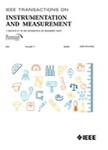版权所有:内蒙古大学图书馆 技术提供:维普资讯• 智图
内蒙古自治区呼和浩特市赛罕区大学西街235号 邮编: 010021

作者机构:Harbin Inst Technol Shenzhen Sch Mech Engn & Automat Shenzhen 518055 Peoples R China Great Bay Univ Sch Adv Engn Dongguan 523000 Peoples R China
出 版 物:《IEEE TRANSACTIONS ON INSTRUMENTATION AND MEASUREMENT》 (IEEE Trans. Instrum. Meas.)
年 卷 期:2025年第74卷
核心收录:
学科分类:0808[工学-电气工程] 08[工学] 0804[工学-仪器科学与技术]
基 金:National Natural Science Foundation of China Shenzhen Science and Technology Program [JCYJ20241202123501003, KJZD20230923113801003]
主 题:Feature extraction Defect detection Anomaly detection Training Image reconstruction Location awareness Generative adversarial networks Costs Classification algorithms Semantic segmentation detection and localization memory bank Semi-Patchcore semi-supervised learning
摘 要:Product surface defect detection is a crucial technology in industrial production. The adoption of deep learning-based algorithms for inspecting product surface defects has been steadily increasing due to their superior detection capability and enhanced generalization performance. However, current deep learning-based algorithms primarily focus on supervised approaches, which can be inefficient and costly. In this article, we present a novel pipeline for semi-supervised defect detection called Semi-Patchcore, which achieves comparable defect detection performance to weakly supervised methods using only defect-free and unlabeled samples for training. Initially, we establish a memory bank using a labeled defect-free training dataset. Subsequently, we compare the unlabeled mixed data with the features in the memory bank to derive pseudo-class labels. Finally, we train a segmentation network based on DeepLabV3+ using the pseudo-classification labels. To evaluate the performance of our approach, we conduct comparative experiments on four public datasets: MVTecAD dataset, DAGM dataset, BTAD dataset, and KSDD2 dataset. The experimental results demonstrate that our method outperforms state-of-the-art semi-supervised or unsupervised methods in terms of superiority and generalization. Additionally, we explore the impact of label issues on supervised learning observed in this study. Our method also surpasses some weakly supervised segmentation algorithms, showcasing its effectiveness in industrial defect detection.